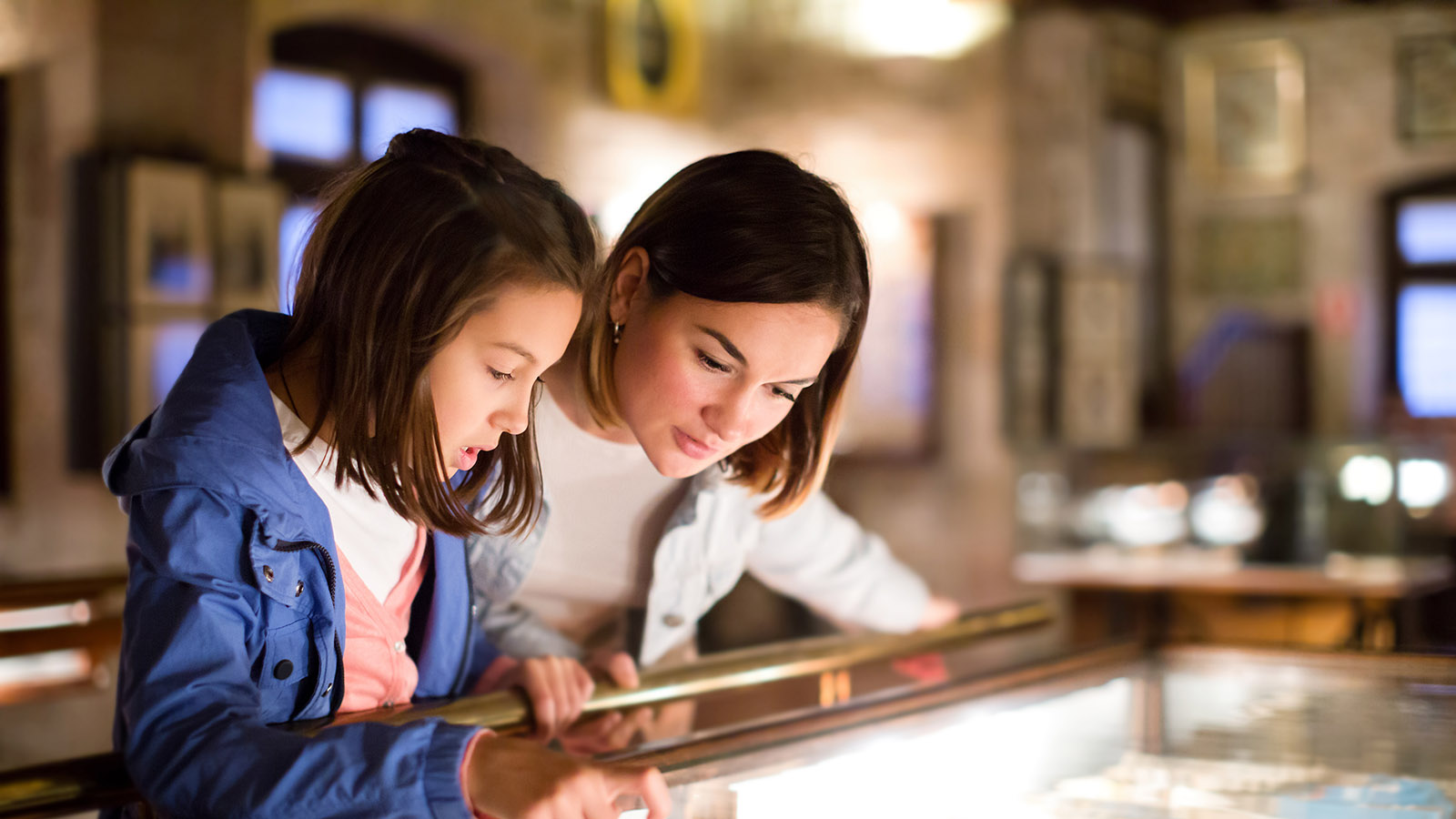By Karen Nemeth, EdM
If you are looking for ways to enjoy language and learning with your young child, consider a visit to a museum. I’ve visited many different kinds of museums with little ones, and I’ve developed some ideas to make sure everyone has a good time. There are expensive museums and free museums. There are huge museums that take hours to see and small museums that might only keep you busy for a few minutes. The important thing is to find out about the museum in advance so you can be sure you and your child enjoy the visit with no hassles..
The secret to making sure your child’s museum visit is NOT boring is to find ways to talk about his or her interests. Show your own interest as you ask your child questions along the way. If your child loves animals, find the horses, dogs, or other animals in the pictures or displays. If your child is fascinated by cars and trucks, then that could be the topic of your conversations. In other words, you don’t have to view and talk about everything in the building – just look for the things that you and your child like to talk about.
- Always make sure your child is well-rested, and has had something to eat and drink before you go. Hunger and thirst can really make it hard for a child to pay attention.
- Don’t worry about the time. Go when you are all ready, and leave when your child is ready to leave. In the early years, you want to set the stage for your child to enjoy lots of community events, so it’s a good idea to spend a shorter time and go home before your child gets tired or cranky.
- Start with an easy museum experience such as a free exhibit at the local public library so your child can get used to what museums are all about.
- Make a language plan for your visit. Consider speaking only in Spanish for half the time and only in English the other half of the time. If you think you might visit the museum more than once, then speak Spanish on one trip and English on the next.. What a fun and interesting way to build everyone’s bilingual vocabulary.
- Many towns and counties have small local museums that are easy to get to and have fun or informative materials you can enjoy for a quick visit.
- Find out about the museum in advance.
- Some museums really are not right for young children and those can be visited another year.
- Some children’s museums look like fun, but charge expensive fees. See if coupons or discounts might be available.
- Ask about hands-on activities that give your child lots of fun things to try and do.
- Find out if the museum offers signs, maps, recordings, or tours in English and Spanish.
- Check the schedule for special young children’s events such as a story time or make-your-own-art experience.
- Be sure you know how to get to the museum and where to enter or park so you can have a smooth trip that is enjoyable for everyone.
- Many museums have rules about what you can carry in, so that would be good to know before you go.
- Read a book with your child to introduce the museum experience.
- “Visiting the Art Museum” by Laurene and Marc Brown
- “Dr. Seuss’s Horse Museum” by Dr. Seuss
- “Un día en el Museo para los Niños” by Celeste Bishop
Museums can help your child learn about art, science, their community, their culture, other cultures, technology, music, animals, costumes, history, and more. No matter what kind of museum you visit, you can be sure there will be lots of new words to add to your child’s vocabulary in their first or second language. Here are some questions to get the conversation going. You can use these in English, or Spanish.
- Do you think this picture looks happy or sad… or some other feeling?
- How do you think that tool or machine works?
- What would it be like to live in the time when those tools were used?
- Can you find some more red things? (Or round things; or how many red things?)
- I see an animal in this display. Can you find it? Now let’s look for more animals. Do any of these animals live in our neighborhood?
- This is something like we have at home (or at grandpa’s home). Can you guess what it is?
- What do you think that person is doing?
- Let’s look for people. Can you find pictures of children? What are they doing? What are they wearing?
These are just some examples. Any kind of conversation you have with your child at a museum is likely to have new words and new ideas. To keep the learning going, try using some photos from the museum website or your own camera to make a little picture album for your child. Add some captions in English or Spanish (or both) to recall what you saw.



